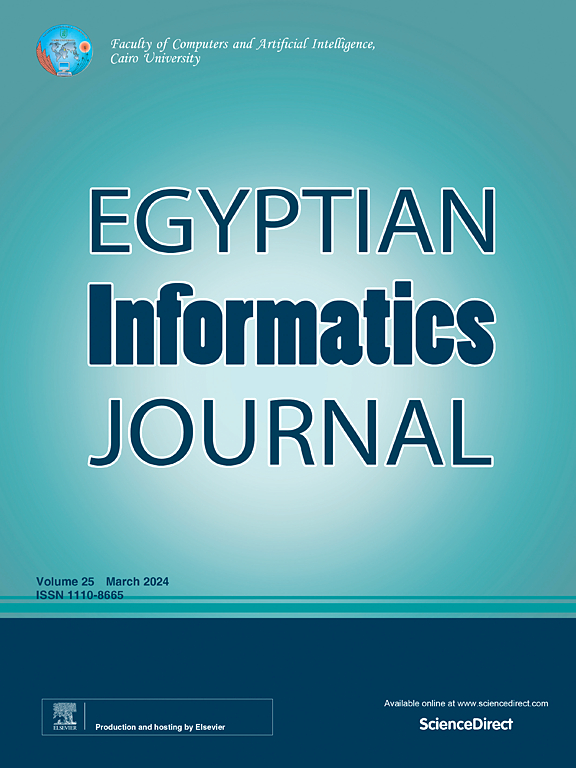Impact of yoga asanas on primary dysmenorrhea-EEG band power analysis and deep learning based classification
IF 4.3
3区 计算机科学
Q1 COMPUTER SCIENCE, ARTIFICIAL INTELLIGENCE
引用次数: 0
Abstract
Background and objective
Women of all ages, starting from puberty, often encounter challenges related to premenstrual syndrome (PMS) and menstrual symptoms. These challenges can include abdominal pain and psychological effects such as stress and anxiety, which can significantly impact brain function. However, yoga has emerged as a promising method to alleviate these menstrual-related issues.
Aim
To study the impact of specific yoga asanas on primary dysmenorrhea in engineering college girl students with Electroencephalogram (EEG) signals.
Method
This interventional study was conducted from July 2023 to December 2023 with a group of 34 young female engineering college students aged 18 to 25, lasting for six months. Participants were selected for the control and intervention groups after getting informed consent. The intervention group underwent a supervised 24-week yoga program, focusing on five specific asanas designed to alleviate menstrual symptoms. This program was conducted five days a week, with each session lasting 40 min.EEG recordings were carried out during the 1st week, 12th week, and 24th week of the program using an 16-channel OpenBCI system for both groups. Power spectral density (PSD) analysis was performed for different frequency bands across various time bins in different brain lobes, and the classification of the signals was conducted using deep learning techniques. Participants’ subjective responses to the asana practice were also collected, and suitable statistical tests were performed as needed. The control group did not participate in any yoga practice.
Results
Practicing yoga asanas in the sequence of Nadi Shudhana, followed by Marjaryasana, Ustrasana, Paschimottanasana, Virasana, and Savasana over six months has led to significant changes. The yoga group experienced decreased pain severity compared to the control group. The Age and EEG power levels between both groups (N = 34) were statistically comparable. Power Spectral Density (PSD) analysis indicates an increase in alpha brainwave activity after six months of practicing yoga asanas. Bidirectional Long Short-Term Memory (BI-LSTM) a deep learning model, demonstrated an impressive ability to accurately classify the signals as pain, normal, or yoga, achieving a high accuracy rate of 93.5 %, which surpassed previous studies. Additionally, 91 % of the participants reported a reduction in menstrual abdominal pain as well as associated psychological symptoms like anxiety and stress through the survey conducted after the intervention study.
Conclusion
This study’s findings indicate that yoga asanas can effectively reduce menstrual pain and enhance cognitive functions, as demonstrated through EEG PSD analysis and participant feedback. This suggests that yoga may serve as a viable alternative treatment for primary dysmenorrhea in young women.
瑜伽体式对原发性痛经的影响——脑电图频带功率分析及基于深度学习的分类
背景和目的所有年龄段的女性,从青春期开始,经常遇到与经前综合征(PMS)和月经症状相关的挑战。这些挑战包括腹痛和心理影响,如压力和焦虑,这些都会严重影响大脑功能。然而,瑜伽已经成为缓解这些月经相关问题的一种有希望的方法。目的研究特定瑜伽体式对工科女大学生原发性痛经的脑电图影响。方法本研究于2023年7月至2023年12月对34名年龄在18 ~ 25岁的工科女大学生进行介入研究,为期6个月。在获得知情同意后,将参与者分为对照组和干预组。干预组接受了一项为期24周的有监督的瑜伽项目,重点关注旨在缓解月经症状的五个特定体式。该计划每周进行5天,每次持续40分钟。两组在计划的第1周,第12周和第24周使用16通道OpenBCI系统进行脑电图记录。利用功率谱密度(PSD)对不同脑叶不同时间仓的不同频段进行分析,并利用深度学习技术对信号进行分类。参与者对体式练习的主观反应也被收集,并根据需要进行适当的统计测试。对照组没有参加任何瑜伽练习。结果在6个月以上的时间里,按照Nadi Shudhana、Marjaryasana、Ustrasana、paschimottanana、Virasana、Savasana的顺序练习瑜伽体式,有明显的变化。与对照组相比,瑜伽组的疼痛程度有所减轻。两组(N = 34)年龄和脑电功率水平具有统计学可比性。功率谱密度(PSD)分析表明,练习瑜伽体式六个月后,α脑波活动有所增加。双向长短期记忆(BI-LSTM)是一种深度学习模型,它展示了一种令人印象深刻的能力,可以准确地将信号分类为疼痛、正常或瑜伽,准确率高达93.5%,超过了之前的研究。此外,通过干预研究后进行的调查,91%的参与者报告经期腹痛以及焦虑和压力等相关心理症状有所减轻。结论通过脑电图PSD分析和参与者反馈,本研究发现瑜伽体式能有效减轻经期疼痛,增强认知功能。这表明瑜伽可以作为年轻女性原发性痛经的一种可行的替代治疗。
本文章由计算机程序翻译,如有差异,请以英文原文为准。
求助全文
约1分钟内获得全文
求助全文
来源期刊

Egyptian Informatics Journal
Decision Sciences-Management Science and Operations Research
CiteScore
11.10
自引率
1.90%
发文量
59
审稿时长
110 days
期刊介绍:
The Egyptian Informatics Journal is published by the Faculty of Computers and Artificial Intelligence, Cairo University. This Journal provides a forum for the state-of-the-art research and development in the fields of computing, including computer sciences, information technologies, information systems, operations research and decision support. Innovative and not-previously-published work in subjects covered by the Journal is encouraged to be submitted, whether from academic, research or commercial sources.
 求助内容:
求助内容: 应助结果提醒方式:
应助结果提醒方式:


